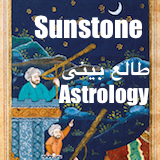The New Yorker:
The late Supreme Court Justice had a keen feeling for the real-world impact of the Court’s decisions.
By Margaret Talbot
Sandra Day O’Connor, the Supreme Court Justice who over and over again provided the deciding vote on divisive constitutional matters, did not like the term often applied to her: “swing voter.” It sounded irresolute, and O’Connor, who grew up on a vast cattle ranch in Arizona and pushed past enough routine sexism in her career to choke a horse (in the early nineteen-fifties, one top firm explained that it couldn’t possibly hire her as a lawyer, but maybe as a legal secretary), was nothing if not resolute. In a 2013 NPR interview, O’Connor, who died on Friday at the age of ninety-three, told Terry Gross, “I don’t think any Justice—and I hope I was not one—would swing back and forth and just try to make decisions not based on legal principles but on where you thought the direction should go, and so I never liked that term.”
Still, unlike the Republican appointees on the Court today, O’Connor never marched under the originalist banner, nor that of any other legal or political philosophy. She was a compromiser—resolutely so. She was the last Justice to have held elected political office before joining the Court, and that experience showed. Before Ronald Reagan appointed O’Connor to the Court, in 1981, she had been active in Republican politics and served in the Arizona State Senate, where she quickly rose to majority leader. She had a keen feeling for the real-world impact of the Court’s decisions, and a natural politician’s sociability and savvy. James Todd, a former political-science professor at the University of Arizona and a good friend of O’Connor’s (they first bonded over a shared love of bird-watching), told me, “She knew how to deal with people and how to compromise and get things done. As majority leader, she’d have senators over to her house, and she’d cook for them—and they’d have to talk to each other.” On the Court, she prodded the other Justices to sit down to lunch together during oral-argument days.
Go to link










Comments